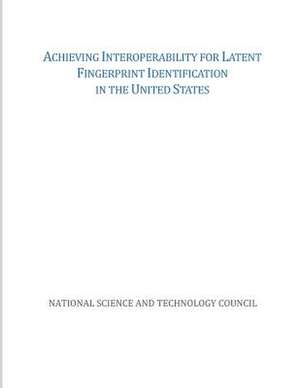Achieving Interoperability for Latent Fingerprint Identification in the United States
Autor National Science and Technology Councilen Paperback
Preț: 82.32 lei
Nou
Puncte Express: 123
Preț estimativ în valută:
15.76€ • 17.12$ • 13.24£
15.76€ • 17.12$ • 13.24£
Carte disponibilă
Livrare economică 01-15 aprilie
Preluare comenzi: 021 569.72.76
Specificații
ISBN-13: 9781507746882
ISBN-10: 1507746881
Pagini: 42
Dimensiuni: 216 x 279 x 2 mm
Greutate: 0.12 kg
Editura: CREATESPACE
ISBN-10: 1507746881
Pagini: 42
Dimensiuni: 216 x 279 x 2 mm
Greutate: 0.12 kg
Editura: CREATESPACE
